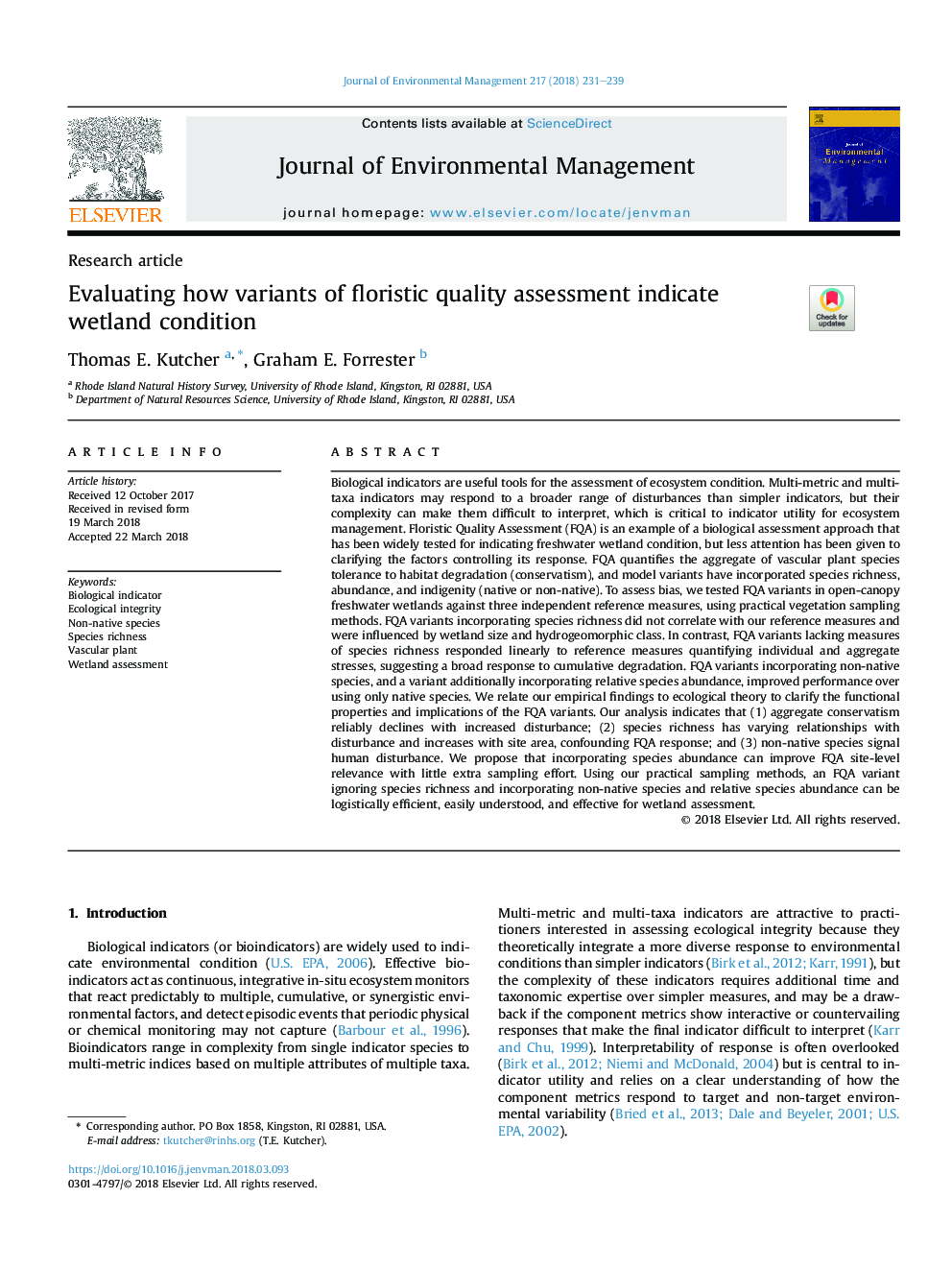| کد مقاله | کد نشریه | سال انتشار | مقاله انگلیسی | نسخه تمام متن |
|---|---|---|---|---|
| 7477175 | 1485201 | 2018 | 9 صفحه PDF | دانلود رایگان |
عنوان انگلیسی مقاله ISI
Evaluating how variants of floristic quality assessment indicate wetland condition
ترجمه فارسی عنوان
ارزیابی نحوه ارزیابی کیفیت ارزیابی کیفیت فلوریتی نشان می دهد شرایط تالاب
دانلود مقاله + سفارش ترجمه
دانلود مقاله ISI انگلیسی
رایگان برای ایرانیان
کلمات کلیدی
شاخص بیولوژیکی، یکپارچگی زیست محیطی، گونه های غیر بومی، غنای گونه، گیاه عروقی، ارزیابی تالاب،
موضوعات مرتبط
مهندسی و علوم پایه
مهندسی انرژی
انرژی های تجدید پذیر، توسعه پایدار و محیط زیست
چکیده انگلیسی
Biological indicators are useful tools for the assessment of ecosystem condition. Multi-metric and multi-taxa indicators may respond to a broader range of disturbances than simpler indicators, but their complexity can make them difficult to interpret, which is critical to indicator utility for ecosystem management. Floristic Quality Assessment (FQA) is an example of a biological assessment approach that has been widely tested for indicating freshwater wetland condition, but less attention has been given to clarifying the factors controlling its response. FQA quantifies the aggregate of vascular plant species tolerance to habitat degradation (conservatism), and model variants have incorporated species richness, abundance, and indigenity (native or non-native). To assess bias, we tested FQA variants in open-canopy freshwater wetlands against three independent reference measures, using practical vegetation sampling methods. FQA variants incorporating species richness did not correlate with our reference measures and were influenced by wetland size and hydrogeomorphic class. In contrast, FQA variants lacking measures of species richness responded linearly to reference measures quantifying individual and aggregate stresses, suggesting a broad response to cumulative degradation. FQA variants incorporating non-native species, and a variant additionally incorporating relative species abundance, improved performance over using only native species. We relate our empirical findings to ecological theory to clarify the functional properties and implications of the FQA variants. Our analysis indicates that (1) aggregate conservatism reliably declines with increased disturbance; (2) species richness has varying relationships with disturbance and increases with site area, confounding FQA response; and (3) non-native species signal human disturbance. We propose that incorporating species abundance can improve FQA site-level relevance with little extra sampling effort. Using our practical sampling methods, an FQA variant ignoring species richness and incorporating non-native species and relative species abundance can be logistically efficient, easily understood, and effective for wetland assessment.
ناشر
Database: Elsevier - ScienceDirect (ساینس دایرکت)
Journal: Journal of Environmental Management - Volume 217, 1 July 2018, Pages 231-239
Journal: Journal of Environmental Management - Volume 217, 1 July 2018, Pages 231-239
نویسندگان
Thomas E. Kutcher, Graham E. Forrester,
